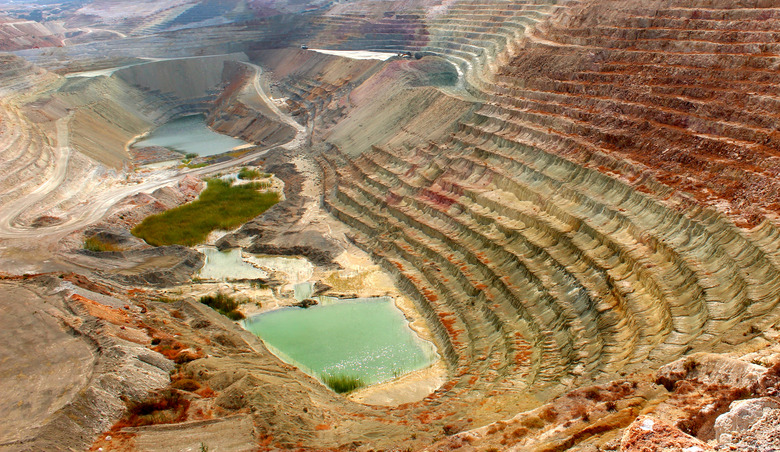Technological Advancement And The Effect On The Ecosystem
While technology can be a powerful force to improve our standard of living, it comes at a cost. New technological goods are often burdensome to the environment. This damage may come from acquiring the resources to produce new technology, or from toxic byproducts of technological production. It can consist of environmentally harmful waste produced by the technology itself, or the castoff remains of obsolete technology.
Resource-Intensive Technology
Resource-Intensive Technology
Some categories of technology, such as electronics, require resources that are difficult to acquire without harming the environment. For example, the advanced batteries in hybrid cars are composed of nickel and rare-earth metals. Mining these materials is a significant source of harmful emissions, including solvent vapors, sulfuric acid and coal dust. Acid-laden water discharges kill all plant and animal life around nearby waterways and have sickened and killed nearby rural residents. This mining largely takes place in China, which has admitted that it sells the rare-earths cheaply because it sacrifices environmental safety standards in the mining process. Similar batteries exist in personal consumer electronics, hard drives, fuel cells, wind turbines, polishing powders and catalytic converters.
Farming Technology
Farming Technology
Advances in farming technology have led to cheaper and more diverse food options, but technological advances that improve production, such as pesticides, herbicides and chemical fertilizers, can also harm the environment. Modern fertilizers increase yields, but they linger in the local environment, damaging soil and groundwater and creating dead zones in lakes and oceans. Pesticides may kill off the pests that affect current crops, but also kills beneficial insects and amphibians, and can build up a population of pesticide-resistant insects that will damage future yields.
Hazardous By-Products
Hazardous By-Products
The use of technology can ease our lives, but it can also damage the environment. The most obvious example of technology usage producing harmful by-products is the greenhouse gases and other toxic emissions from transportation technology. Refrigeration technology produces hazardous gases than can damage the ozone layer and produce toxic liquid effluents that make their way into drainage ways and poison water animals. Even appliances like the clothes washer create microplastic-laden wastewater that winds up in the ocean, where it can be eaten by birds and sea animals.
Technology Disposal
Technology Disposal
New advances in technology often render old technology useless. Discarding outdated or worn out technological goods is a significant source of environmental damage. For example, contemporary compact fluorescent light bulbs contain mercury, which is toxic to both humans and animals. Old thermometers also contained mercury, as do some batteries manufactured prior to the mid-1990s. Discarded vehicles left in place for long periods eventually leak toxic fluids into the ground, where they kill plants, animals and soil microbes. Rainfall can wash pollutants from the discarded technology into waterways, spreading poisons into natural systems and the human food supply.
Cite This Article
MLA
Gellert, Andrew. "Technological Advancement And The Effect On The Ecosystem" sciencing.com, https://www.sciencing.com/technological-advancement-effect-ecosystem-23107/. 23 April 2018.
APA
Gellert, Andrew. (2018, April 23). Technological Advancement And The Effect On The Ecosystem. sciencing.com. Retrieved from https://www.sciencing.com/technological-advancement-effect-ecosystem-23107/
Chicago
Gellert, Andrew. Technological Advancement And The Effect On The Ecosystem last modified August 30, 2022. https://www.sciencing.com/technological-advancement-effect-ecosystem-23107/
